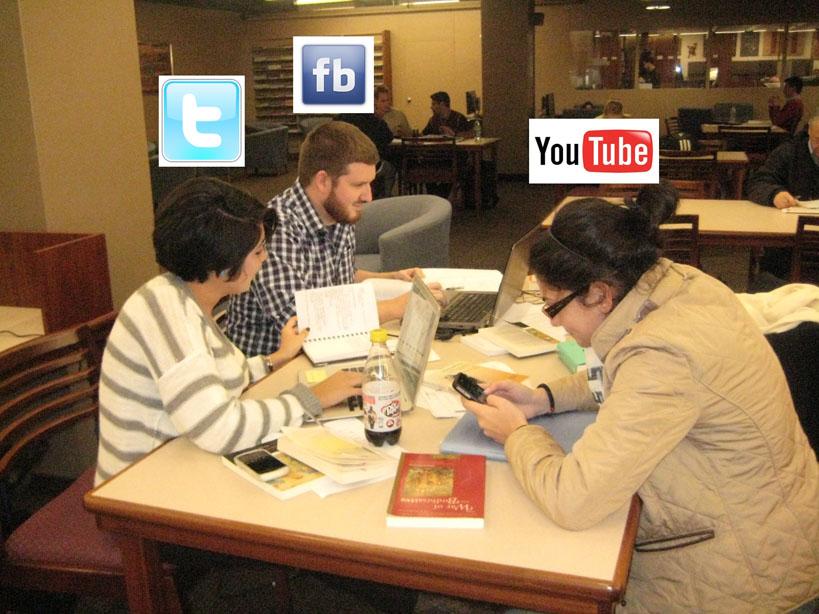Media Devices Distract Students In Quinn
November 3, 2011

Many students use Quinn Library at Fordham College at Lincoln Center (FCLC) to study, but are often distracted by technology devices. Students often find themselves browsing their accounts on social media sites or texting their friends.
According to a study published by the University of Washington on Oct. 12, entitled “How College Students Manage Technology While in the Library During Crunch Time,” there are 10 major findings.
The first point mentioned in the article was that “during one of the busiest times of the academic year,” students used different technological devices to stay in touch with their friends. John Cecero, psychology professor at Fordham, described social media as being an addictive process: “It draws you in from one place to another. It appeals to deep a seeded psychological need for attention and recognition and provides immediate gratification of needs that can be highly addictive.”
Marya Banu, FCLC ’15, said, “I always have two windows open, one for my mail and another for my Facebook.”
Another point in the study was that many of the respondents who have checked for messages also prepared assignments, studied and conducted computer researches of their own personal interests, including sports and gossip.
However, not all students at Fordham use their phones and laptops to check social media when they study in the library. Micha Green, FCLC ’13, said that she is at the library “solely” to study and leaves her phone in her dorm.
“I do keep Gmail open, but that’s just for studying purposes,” Green said. “I have to stay focused when I am in the library.
The study also found that most of the respondents considered themselves light technology users, or users who used only few devices for their coursework. Of the study, only six percent were heavy technology users.
Banu said, “I consider myself a light technology user. I don’t text anymore, I just use my laptop for school, sending messages and checking my mail.”
One interesting way in students used social media sites is to coordinate meetings with fellow classmates while engaging in class work, according to the study. Ashley Misir, FCLC ’15, said, “I use media sites like Facebook to plan last-minute study meetings with my friends.”
The study mentioned that “social media sites, such as Facebook, online forums and YouTube are used to create new studying and learning practices. In these cases, sites were used out of intellectual curiosity and/or to excel in courses or grasp course material they did not fully understand.”
Misir said that she used YouTube to help better explain topics which she doesn’t have a clear understanding.
As for cramming, many students found themselves procrastinating for midterms.
In addition, Cecero provided an explanation for the reasons why students do so and the consequences that they eventually face. “Social media and other forms of technology provide an idea that can be accessed immediately and this is sometimes productive for cramming.”
However, he said, “What’s missing is the time to process the information and to integrate it with other information for finals and you could end up with superficial material and detract from quality of response.”











